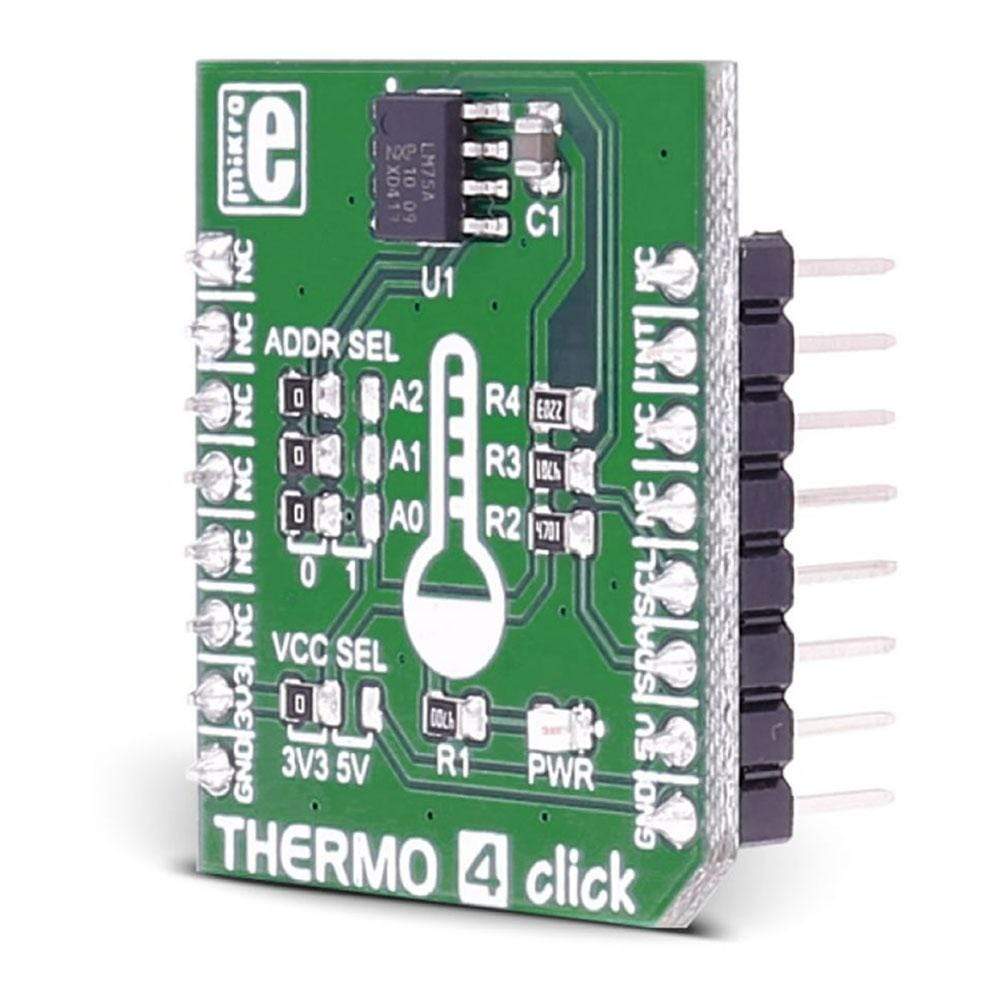
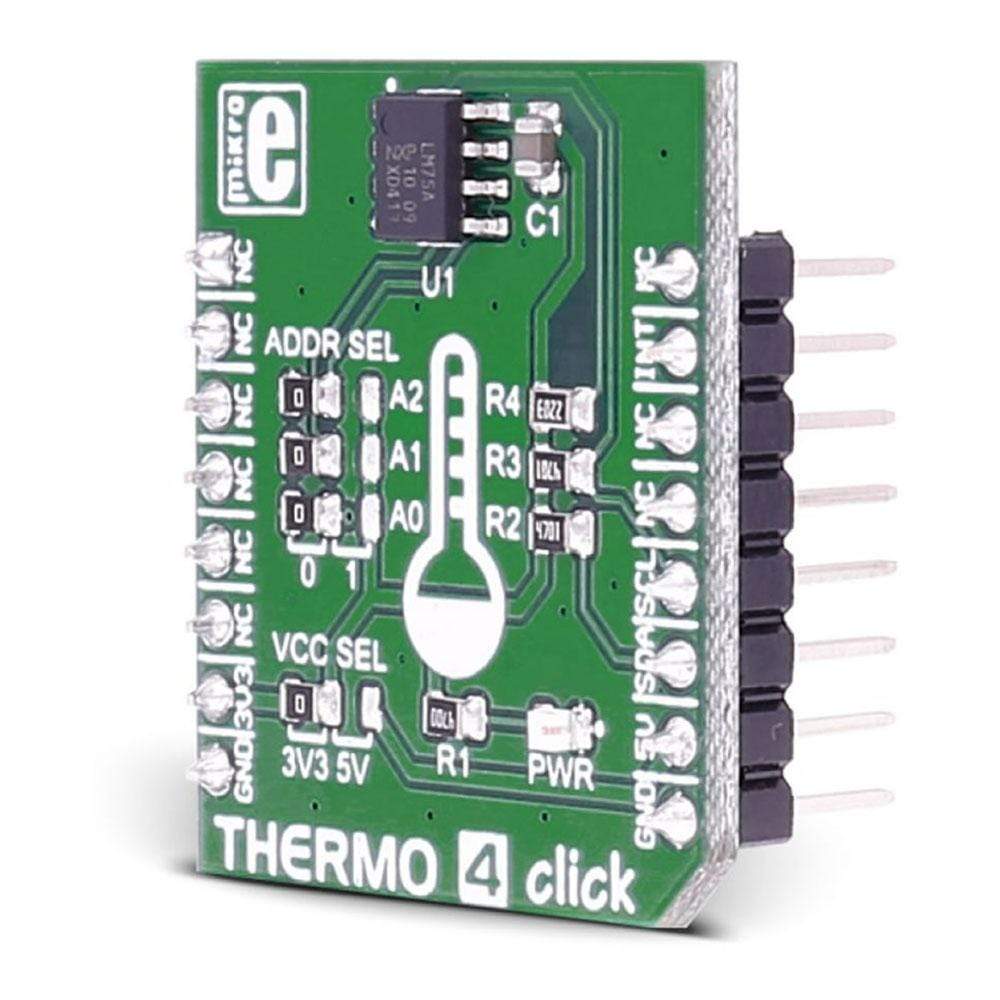
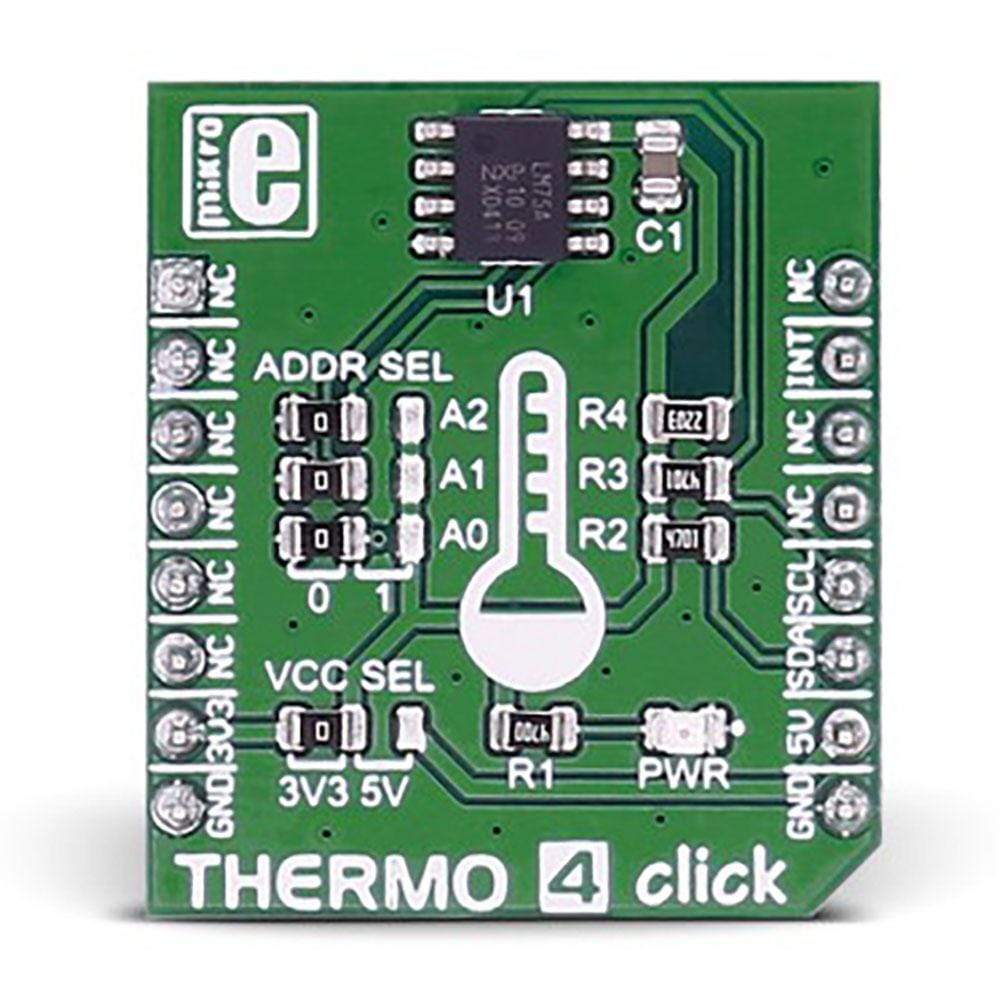
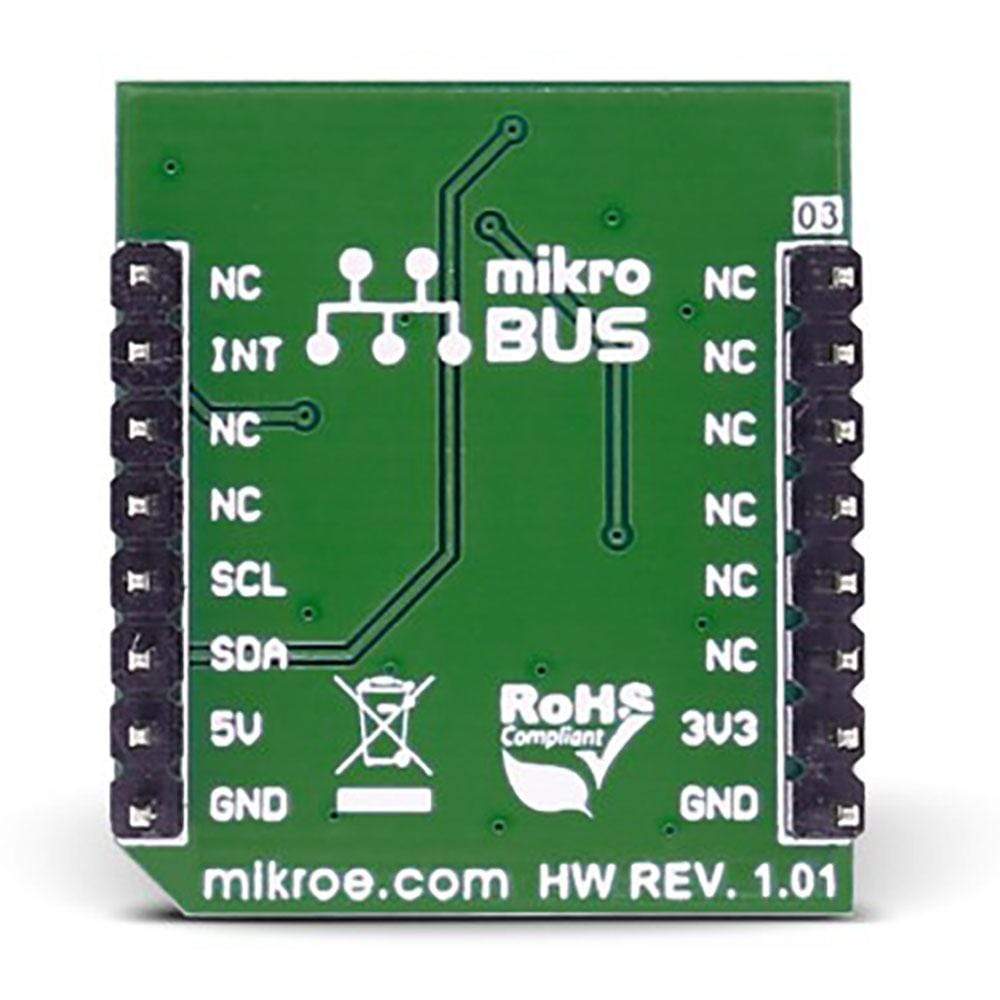
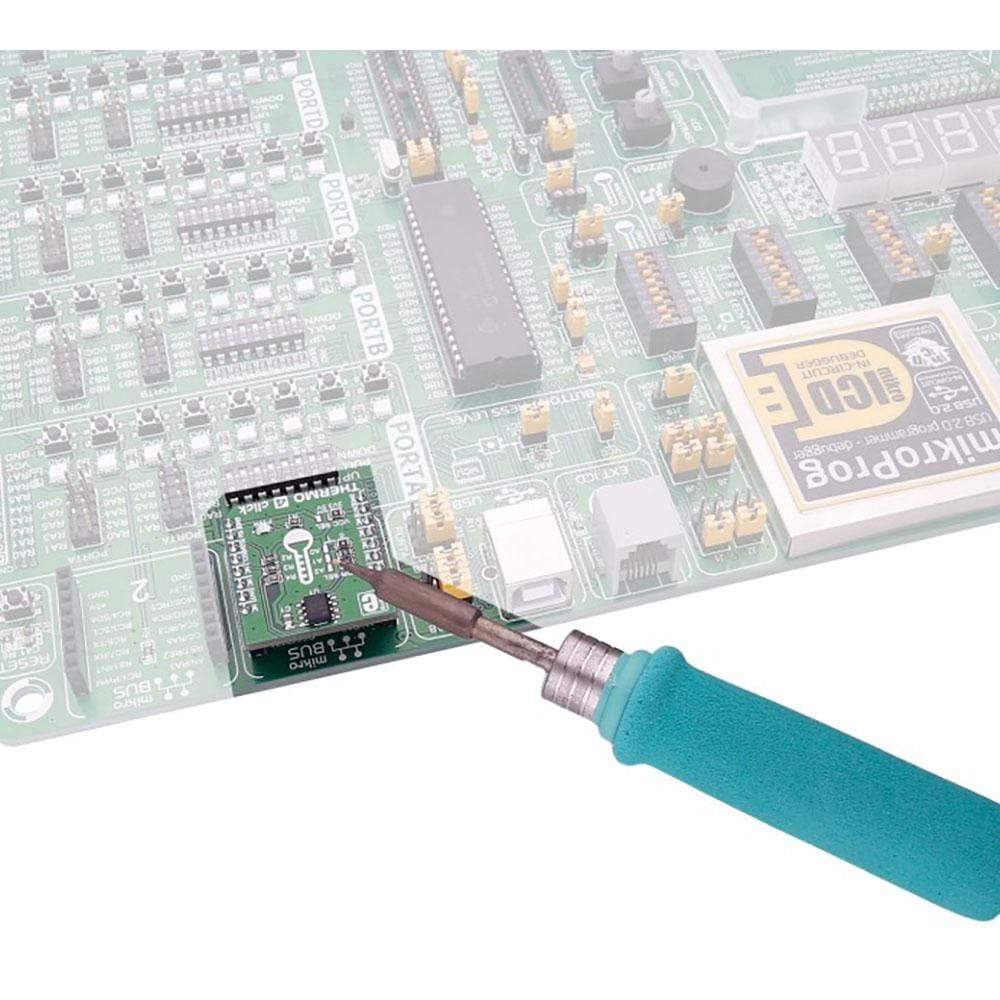
Overview
The Thermo 4 Click Board™ is based on the LM75A digital temperature sensor and thermal watchdog from NXP. The sensor has a range from -55 °C to +125 °C.
The Thermo 4 Click Board™ is designed to run on either a 3.3V or 5V power supply. It communicates with the target microcontroller over the I2C interface, with additional functionality provided by the INT pin on the MikroBUS line.
Downloads
The Thermo Click Board™ carries the NXP LM75A digital temperature sensor and thermal watchdog. The sensor has the range from −55 °C to +125 °C . The click is designed to run on either 3.3V or 5V power supply. It communicates with the target microcontroller over I2C interface, with additional functionality provided by the INT pin on the mikroBUS™ line.
LM75A Features
The NXP LM75A is a temperature-to-digital converter using an on-chip band gap temperature sensor and Sigma-delta A-to-D conversion technique. The device is also a thermal detector providing an overtemperature detection output.
The sensor can be configured for different operation conditions. It can be set in normal mode to periodically monitor the ambient temperature, or in shutdown mode to minimize power consumption.
The temperature register always stores an 11-bit 2's complement data giving a temperature resolution of 0.125 °C. This high temperature resolution is particularly useful in applications of measuring precisely the thermal drift or runaway.
SPECIFICATIONS
| Type | Temperature & humidity |
| Applications | System thermal management, personal computers, electronics equipment, industrial controllers |
| On-board modules | LM75A |
| Key Features | Temperature range: from −55 °C to +125 °C |
| Interface | GPIO,I2C |
| Compatibility | mikroBUS |
| Click board size | S (28.6 x 25.4 mm) |
| Input Voltage | 3.3V or 5V |
PINOUT DIAGRAM
This table shows how the pinout on the Thermo Click Board™ corresponds to the pinout on the mikroBUS™ socket (the latter shown in the two middle columns).
| Notes | Pin |  |
Pin | Notes | |||
|---|---|---|---|---|---|---|---|
| NC | 1 | AN | PWM | 16 | NC | ||
| NC | 2 | RST | INT | 15 | INT | Overtemp Shutdown output | |
| NC | 3 | CS | TX | 14 | NC | ||
| NC | 4 | SCK | RX | 13 | NC | ||
| NC | 5 | MISO | SCL | 12 | SCL | I2C-bus serial clock input | |
| NC | 6 | MOSI | SDA | 11 | SDA | I2C-bus serial bidirectional data line | |
| Power supply | +3.3V | 7 | 3.3V | 5V | 10 | +5V | Power supply |
| Ground | GND | 8 | GND | GND | 9 | GND | Ground |
JUMPERS AND SETTINGS
| Designator | Name | Default Position | Default Option | Description |
|---|---|---|---|---|
| JP1 | VCC.SEL. | Left | 3V3 | Power Supply Voltage Selection 3V3/5V, left position 3V3, right position 5V |
| JP2 | ADD0 | Left | 0 | I2C address select bit 2 |
| JP3 | ADD1 | Left | 0 | I2C address select bit 1 |
| JP4 | ADD2 | Left | 0 | I2C address select bit 0 |
| General Information | |
|---|---|
Part Number (SKU) |
MIKROE-2632
|
Manufacturer |
|
| Physical and Mechanical | |
Weight |
0.017 kg
|
| Other | |
Country of Origin |
|
HS Code Customs Tariff code
|
|
EAN |
8606018710492
|
Warranty |
|
Frequently Asked Questions
Have a Question?
Be the first to ask a question about this.





